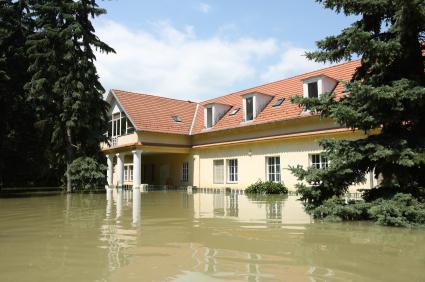 As the busiest part of the Atlantic hurricane season is getting underway, homeowners ought to be aware of the risks of storm surges and the severe flooding they can cause.
As the busiest part of the Atlantic hurricane season is getting underway, homeowners ought to be aware of the risks of storm surges and the severe flooding they can cause.
Regular homeowner’s insurance does not apply to floods.
Flood insurance covers your property against hurricane-caused storm surges as well as flooding generated by the torrential rains, which often accompanies tropical storms, according to the Insurance Information Institute.
Homeowners and renters can get flood insurance in the form of a separate policy from the National Flood Insurance Program and from a few private insurers.
The NFIP provides coverage for up to $250,000 for the structure of the home and $100,000 for personal possessions. The NFIP policy provides replacement cost coverage for the structure of the home, but only actual cash value coverage for possessions.
Replacement cost coverage pays to rebuild the home as it was before the damage occurred. Actual cash value is replacement cost coverage minus depreciation so that the older the possessions are, the less lower the claim for them will be if they’re damaged. There may also be limits on coverage for furniture and other belongings stored in a basement.
There is a 30-day waiting period before the coverage takes effect, so it is important not to wait until the last minute to buy a flood insurance policy.
Flood insurance is available for renters as well as homeowners. Anyone who lives in a designated flood zone ought to have it, but it is worth keeping in mind that flooding can also occur in inland areas and at a distance from major rivers.
In July a flash flood watch was in effect for the Santa Ana Mountains. Anyone at risk of being flooded by a nearby river, creek or pond may want to consider buying a flood insurance policy if their home—or of there’s a risk of being flooded by water running down a steep hill.
Excess flood insurance is also available from some private insurers for those who need additional insurance protection over and above a basic policy or if a community does not participate in the NFIP.
Depending on the amount of coverage purchased, an excess flood insurance policy will cover damage over and above the limits of the federal program on the same basis as the federal program—replacement cost for the structure and actual cash value for the contents.
Excess flood insurance is available in all parts of the country wherever the federal program is available—in high risk flood zones along the coast and close to major rivers, as well as in areas of lower risk.
It can be purchased from specialized companies through independent insurance agents or from regular homeowners insurance companies that have arrangements with a specialized insurer to provide flood coverage to their policyholders.
For an in-depth look at flood insurance, see our story “When the waters rise: The need for flood insurance.”
Also see our story “Fiscal planning key to hurricane season survival.”












